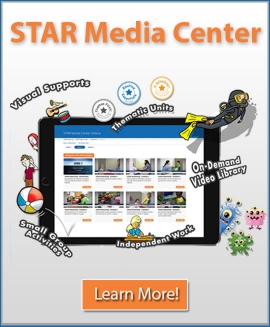Everybody Needs a Little Free Time!
Educators are relentless in their pursuit of cultivating a community of learning and leadership in their classrooms and schools. As a result, free time is an abstract concept for most teachers and staff, and for many students with autism and other related disabilities, it is a veritable mystery! Have you ever noticed how your students seem willfully opposed to leaving the free time area neat and orderly? Have your students mastered the perimeter walk in your classroom or in outside areas? If the familiar sound of bells ringing is pulsing through your head, then (1) you are not alone, and (2) task analyses and individual lesson plans are here to take the bells down a notch!
Understanding how to handle free time can be difficult for many of our students. We are asking them to make selections from a variety of activities, engage appropriately and independently, stop the activity in a timely manner, gather and put away materials, and transition to the next activity. Many students are going to require explicit instruction at each step of the free time routine. Luckily for users of STAR, your students are getting direct instruction in these areas through discrete trial training, functional routines, and naturalistic teaching methods.
Here are four tips to help your students get the most out of their free time:
1. Remember that the STAR Student Learning Profiles are curriculum-based assessments designed to help teachers identify students’ instructional level across multiple domains. Once identified, leisure and free time skills can be taught through discrete trial (e.g., non-verbal imitation with objects, following multi-step directions), functional routines (e.g., using a computer, independent play), and pivotal response training (e.g., functional and symbolic play).
2. Check out the STAR Blackline Masters for Level I Play and Social Interaction (FR) Lesson 3: Independent Play, as well as Level III, Lesson 11: Occupying free time, to see whether these routines have a place in your classroom. Don’t forget about the blank functional routine form located in the Blackline Masters to individualize any routine!
3. Be sure to explore the Routine Essentials folder in the STAR Media center for visual, behavior, and social supports for a variety of school day activities, including recess. The PRT Play Interactions folder, also in Routine Essentials, provides several activities and ideas to support the development of play and leisure skills.
4. Make the most out of students' free time by teaching them how to engage in and enjoy leisure activities safely and independently. Remember that free time for students means data collection time for teachers and staff! Happy data collection and analysis.

